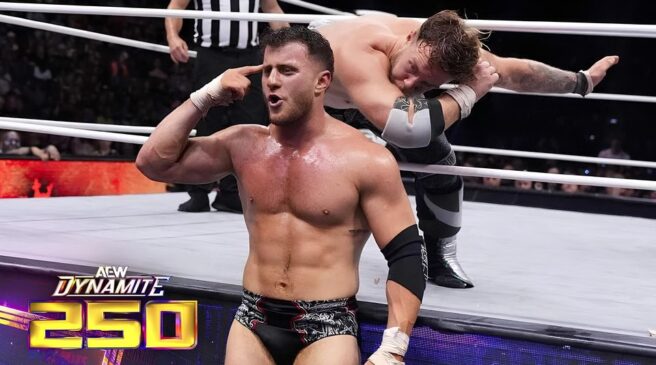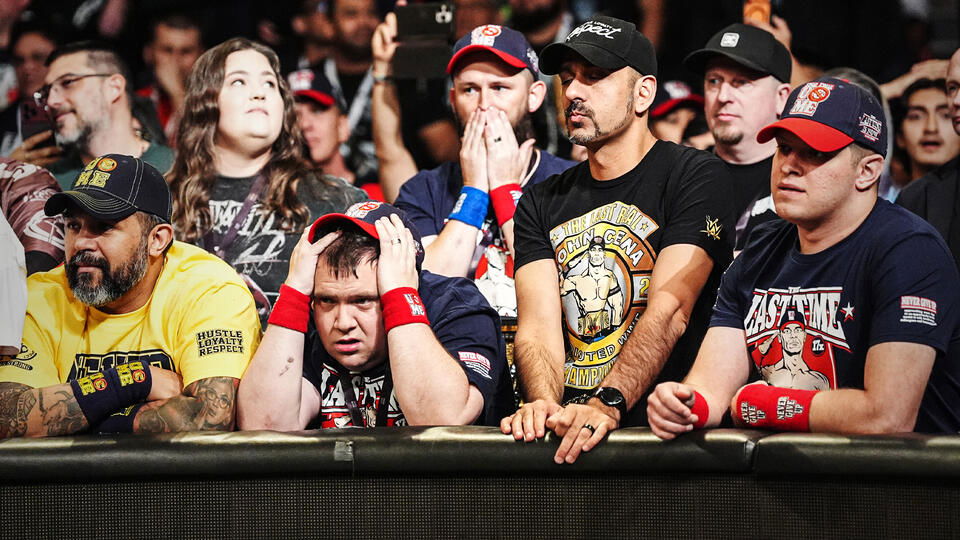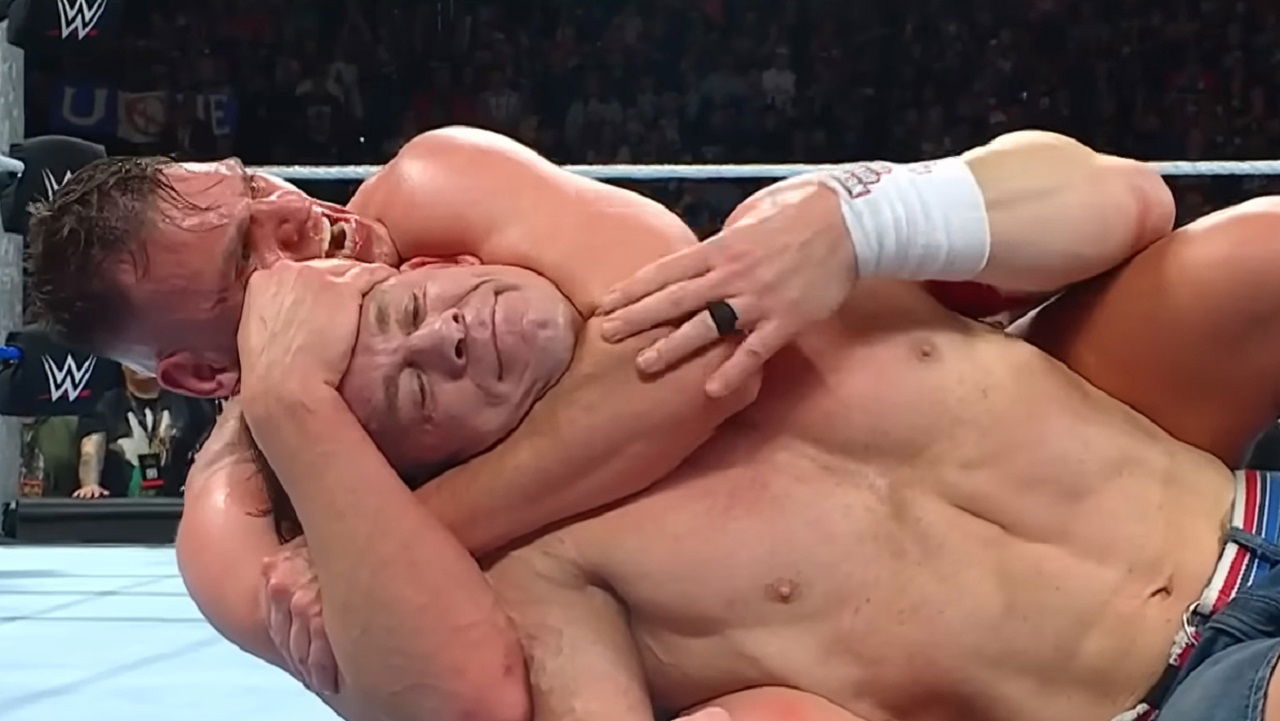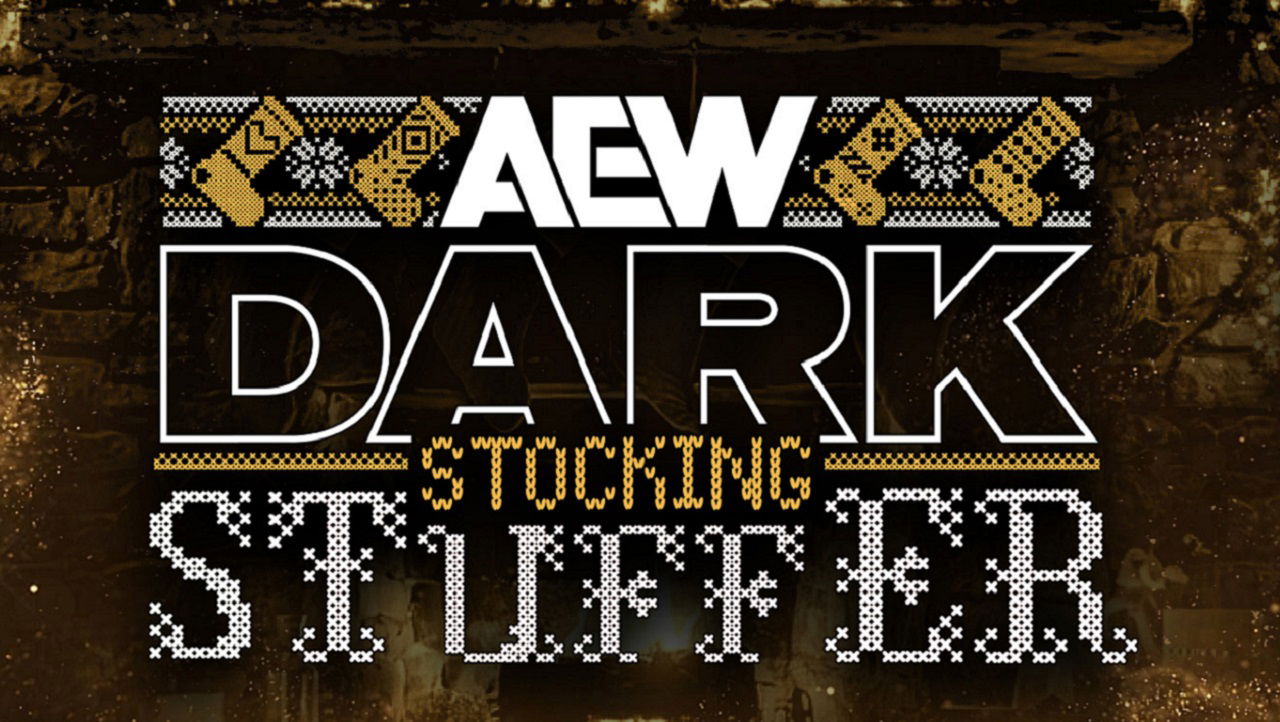Ospreay, MJF Match Future Proofs AEW’s Foundation

Over the last year or two when you watched AEW it seemed like the company felt directionless, or perhaps even lost its purpose. What the company’s identity was had been compromised amid injury, departures, or arguably even shortsighted talent signings that never panned out for one reason or another beyond a few key people who fit the company perfectly.
From the outset the point of AEW has been to be the alternative to WWE. It was never going to exceed WWE’s footprint, but its point was to show another company could thrive and offer something else in the sphere of the artform to watch on a bigger scale. In that AEW has been successful.
In other areas, such as with CM Punk’s firing and a contingent of the roster being all-too-happy to usher him out, AEW’s visage has been overshadowed by the spectre of things that occurred behind the scenes. Since so much of that situation seeped into the media, to a degree it poisoned the perception of what AEW has ever tried to do. To say egoism on both sides undercut nearly two years of AEW’s history is an understatement.
What’s the Foundation of AEW?
In specific terms, the obvious answer is “The Elite.” But what does that mean?
I would argue the Bucks were a parody of what they were on screen after a point. I disagree with the sentiment that the current version of the group is a disservice or not worthwhile to AEW as a product, and I would counter that with while their in-ring work has been at least par with their best, playing the tweener role as they were at the beginning of the year has never been their strongest role. They either needed to be hard-working DIY guys, or abject dickheads like they are now. There’s no in between with them.
I look at Kenny Omega, and his forte has always been his in-ring ability, less so character, and I would argue that when they returned as a trio post-suspension after Brawl Out and slid into the trios title feuds, they felt like a tribute band ripe with fan service. Top of their game in the ring? Sure. But what was the point other than fan service anchored in Kansas’ soundtrack.
Wayward sons? Definitely.
Then I look at Hangman Page, who almost inarguably with Omega out with injuries the last two years, has become the most consistent member of the original group. His story and run to the AEW title defined the most important initial story arc of the company in its first three years. The build and execution was near perfect culminating in his title victory against Omega. We saw the hard-working, character-driven, no frills storytelling short of the WWE scope but still solid and digestible. People who watched him cared, and his title defences were some of the best matches the company has had.
Cody Rhodes: There’s no conservation about AEW or the Elite foundation of the company without him. Discard the hyperbole of who did what and when, I will always argue that regardless of when Tony Khan wanted to start the company, regardless of who was spoken to first, regardless who met who in person first, the foundation of AEW is not defined without that bet Rhodes made with Dave Meltzer about running a 10,000 seat arena and without Rhodes being at the forefront of the movement at the time. All In is pivotal to everything AEW is; it’s the bravado and right-set ego to not shy away from the challenge, to defy convention and stand on its own. While this is just my perspective, I don’t think it’s wrong either.
All In steeped the tea leaves Khan read in 2018,
and from there we drink — signings, PPVs, TV deals and all.
Somewhere along the way the company lost sight of its origins. Perhaps it lost its way due Khan’s own ego, maybe it was Punk, or maybe it was the Jackson boys. Maybe Cody got tired of all of it and was part of why he left. There’s a lot we could say and it would be pure conjecture, but once Brawl Out occurred all we could talk about for months was the fights, the suspensions, the returns, the recovery, the new show with split rosters, fake glass, real glass, backstage discord, meetings that were (allegedly) planned, missed flights, more glass, ditches filled with water to the tune of “Cry Me A River,” and a lazy chokehold that Mickey Gall would have laughed at.
Yeah, I went there.
When you look at the history of the company, after a point so much of it is steeped in bullshit. I believe that’s part of the reason why AEW’s viewership has somewhat declined; partially because the same feeling of its origin doesn’t beat at the centre of it, but also because as wrestling fans I think we’re at a point where because WWE put on such a terrible, uncontested product for years we have a low tolerance for content not worth our time. Couple that with WWE rebounding and a litany of other good wrestling companies existing, and naturally AEW is going to take a hit.
There have additionally been times, very frequently at that, where it’s clear AEW’s roster has been bloated at or past the heights of WWE’s roster bloat from a few years ago. While we should understand why Khan would want to sign any who are available, it came at the cost of shoving aside some of AEW’s core, many of whom are gone now, even more of which are scarcely used on television. In that there’s something to be said for making the right moves and not necessarily every move.
Over time, what AEW “was” faded and transformed into something either more corporatized or in the vein of what Khan booked in his notebooks or with his wrestling toys (or was that just me?…anyway) when he was younger.
This is not to say everything is bad, because it’s not. 2024 has been a positive step forward for AEW and the “restoration” of “the feeling” is real. But what does that mean? It’s been a little ill-defined.
So here’s what I think.
Can’t Stop “The Feeling”
When we think of the company’s genesis, its birth comes out of the popularity of the Elite on the ROH and NJPW stages. It’s something organic, that fans actually cared about. It was about good characters, hard work, defiance and being willing to put the work in to excel and be the best. The Young Bucks’ rise is touted as a DIY success story, and that connection with people that was forged over the years translated through 2018, into All In and toward the creation of AEW in 2019. So when they say “restore the feeling,” I think we’re talking about bringing the company back to its roots in and outside of the ring. It’s evolved past the indie-centricity of 2018, but the core of what it hinges on is the connection with the audience in the simplest terms. At its core is its authenticity.
When I look at the company now, I see a different version of what was spawned by the core four and Hangman. I see a natural evolution of people born from odd, adverse circumstances. I see the Bucks genuinely being peeved that FTR is better than them (sorry, not sorry), I see Jack Perry being thrust into a legitimately angry spot for how he was treated post-All In 2023. How he was scapegoated. That’s real, that’s where the connection lays. It feels like people can connect with Okada’s comedic side, not even getting into his wrestling, because they believe he could be a dick (please leave the balloons at home though). It’s a slow brew evolution that’s organic in the same way that we see successes in Swerve, Toni Storm or even Christian Cage and all of the stories surrounding them.
Take all of that, and mix that with some top-shelf wrestling and that’s what AEW was and less so what it became. Its connection to the fans was organic, anchored by people with genuine stories or stories with characters who felt genuine and authentic with their personalities being a dialed up version of themselves. It’s simple and effective, and when we account for Hangman’s recent turn coupled with Swerve whom Page casts as the villain of his own story, Page also becomes layered as a heel because we accept that he was the fan favourite of AEW, the anointed one, and the man who swore he’d protect AEW from the likes of CM Punk. If we take him as a defender of what AEW was, then his fit into the big picture makes sense if Swerve is supposed to be his opposite given how their story played out. Even though Swerve’s personal rise is very AEW-esque, he’s a product of the positive aspects of AEW’s evolution and not so much its foundation. It’s what makes that story feel authentic, because in a story sense it’s very realistic. Swerve is the result, an evolution of the dream, whereas Page is the dream itself. And along they way, they butted heads, bled and maybe there was a home invasion along the way.
So where does that leave MJF and Will Ospreay?

(Below we’re just going to focus on the men’s division because I feel like AEW’s women’s division is a separate conversation due to how slow AEW has been to build it properly. There are definitely key pieces in the women’s division too.)
The Assassin, the Mogul, the Scumbag and the Hangman
MJF, Ospreay, Swerve and Hangman are cornerstones of AEW’s present and the immediate future of the AEW world title picture. The Page-Swerve feud is a key piece, and I think Ospreay vs. MJF historically will turn out to be a very important match in AEW history. The only true difference between the four is that Swerve and Hangman is established, and I think this is just the beginning for Ospreay and MJF.
AEW at its beginning, and now as part of the push to “restore the feeling,” has been built off sentiment and the visage of counter culture we thought was needed. But once that’s peeled back — or whatever other turn-of-phrase you want to employ here — what’s left? Wrestling just for the sake of wrestling is great if that’s what you want, but its’ hardly unique. You can watch wrestling from any company online. If I want a ton of wrestling just for the sake of wanting to watch it, I’ll go renew my Wrestle Universe subscription.
So what’s AEW then?
At its best, it’s great wrestling you won’t see elsewhere featuring some of the best in the world with a focus on grounded characters on a smaller scale. Physical storytelling in and of itself isn’t enough, nor has AEW’s peak successes just centred around its high-end matchups or “Forbidden Door” scenarios.
Apart from dream matches like a veteran Kenny Omega vs. Bryan Danielson, AEW’s best moments have provided a substantial opportunity to emotionally invest in the people and their characters that we see week to week, and in the rarest cases, something that hooks you psychologically. And from that, I would argue AEW has spent too much of its existence simply existing. Too much time focusing on people who claim to have AEW’s best interests at heart, or who portray themselves as the future, as opposed to actually investing in the future in both respects.
When I think of AEW at its best, I think of the Omega-Hangman build and more broadly Page’s arc leading to his crowning moment. It was simple, but something to invest in long term. I think of the FTR-Bucks build and their series of matches–although starting slow and hinging just on the match itself, as time has passed it’s been grounded more in a philosophical difference in how to practice pro wrestling. And further their styles are polar opposites and therefore gel perfectly because they complement each other so well. Singularly I think of Moxley in how he embodies what AEW is in practice.
What Swerve and Page have done so far falls within that framework too. However Ospreay and MJF feels like it’s another beast that when you truly break down is a perfect pairing. In one respect you have MJF who’s a no frills heel wrestler. He’s masterful on the mic, technical and nuanced in his more grounded, low-risk classic wrestling style and will cheat to win at any cost because all he wants is money, fame and wins. Conversely, Ospreay is a quintessential fan favourite. He leans into the fans’ adoration of him, is physically gifted beyond comprehension and is one of the most daring high flyers of this generation who will sacrifice himself for the fans and the spectacle of the craft.
Last Wednesday’s hour-long epic gave us a taste of might lay ahead for them; what future matches between the two could be. Their match set the parameters for a feud between the two that can be on the level of the Young Bucks and FTR in the AEW landscape. We learned what they can do separately, together, and more importantly what they can’t or won’t do in kayfabe.
Will Ospreay has called himself the best in the world for the last few years because he can do what few can as a heavyweight. We’ve seen him win titles and thrill fans with a killer instinct, and then there’s that one particular fan of his who heaps stars on him left and right. Yet when it mattered most he hesitated and met someone who will do anything in the world to be the best. There’s a natural synergy between the two because they’re complete, complementary opposites in how they approach professional wrestling.
On the one hand, MJF is someone who approaches the craft more methodically, cerebrally on a HHH level, and who in the ring does what he needs to do while also focusing on the shortest path to victory. It could be wearing down a body part for his finish, or once the well is dried, he uses the ring. There’s a lot more intricacy between those two points, but that’s his M.O. In contrast, Ospreay’s style is very much modernized and molded on the premise that this is a fight with health bars and he’s fighting to KO his opponent in spectacular fashion. He does awe-inspiring things because he can — akin to Superman — and does so without considering consequences.
They couldn’t be more different, and that’s why their 59:58 long match worked so well. They are polar opposites, but together they are perfect foils for each other. And if we’re going to refer to Ospreay as Superman, then that makes MJF and his Kryptonite diamond ring AEW’s Lex Luthor. Because in the end while Ospreay has all the tools in the world to beat him, MJF only needs one tool, one thing. The will to do what is necessary without limits, that’s why Ospreay ultimately failed in his dance with his own conscience over using the Tiger Driver ’91. MJF prevailed, and that makes him the best in the world in defeating the Billy GOAT (and Meltzer’s totally favourite wrestler ever).
This is where we’re left several days removed from their fantastic match.
AEW has never had a fully defined main event scene. It has had champions, it has had feuds, but it’s lacked a definitive direction and has over time mostly degenerated into a series of title trades with little consideration for what’s next. The scene itself has been very one dimensional. Look at its history for reference, but I would argue the division has been defined by Jon Moxley’s three reigns, Omega’s longer single reign, MJF’s even longer reign, the murkiness of CM Punk that went nowhere and then Hangman’s rise to the title. Aside from Page and Omega that had actual narratives built around it, it’s mostly just been a series of successive reigns with only Omega and Mox’s feud extending past their first title match. Perhaps you could throw in MJF and Mox since they had a prior match, but that history is more so circumstantial whereas the title runs orbiting Omega are steeped in feuds built over the first three years of AEW.
Now, however, we have something different. Comparatively you potentially have four people who work completely differently, and whose characters are very much defined within AEW and in terms of what their motivations are. We have four people you can put against each other in any combination and have something compelling in some form. With MJF and Ospreay, you have the makings of a company-defining feud because I don’t think there’s any limitation to what they can accomplish together. This will be the first of many between them, and as for what lays ahead whether that be at Wembley next month or farther down the road, what’s clear to me is that these two paired together have the potential to define what it means to be an AEW main eventer. They have the potential to elevate AEW beyond what it has been and toward what it can become.




